You will learn the correct placement of these swimming pool shutoff valves. Moreover, we have listed other vital information that you need to know about pool valves. Read further.
Pool Valve Positions
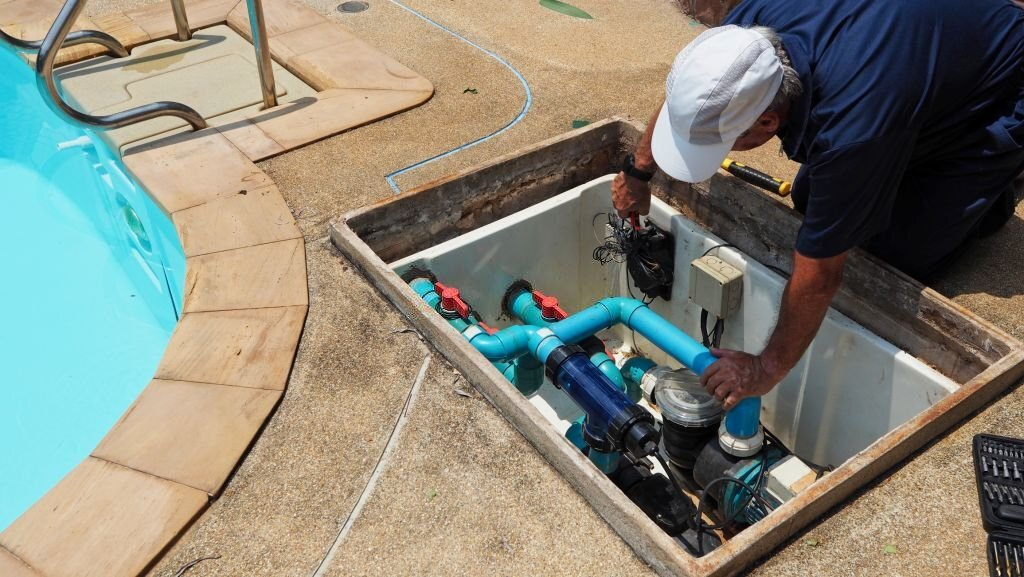
Image Source: iStockPhoto
A pool check valve is a valve that is installed in the plumbing of a pool to prevent the backflow of water. The valve is placed in the line between the pump and the filter.
Where Should a Pool Check Valve Be Installed
The area closest to the pump is the best place where you can install a pool check valve. The closer the valve to the pump is, the more you can guarantee that the water only flows in a single direction. Specifically, the direction should be from the pool toward the pump.
Should a check valve go before or after a pump? Check valves should be installed before the pool’s outlet control valve and after the pump itself. This positioning ensures that water won’t return to the pool.
How to Operate Pool Pump Valves
Installing and operating pool valves are tasks you can accomplish by yourself. To do this, you simply have to do the following:
- Shut the power on our pool pump
- Next, drain the water on the plumbing lines of your pool
- After that, install your check valve. Secure the fittings properly.
- Once fully secured, you can turn the power of your pool pump again.
- Let the water pass through the plumbing lines of your pool. Check if there are leaks.
Check Valves in Pool Plumbing
What Is a Pool Check Valve?
A swimming pool check valve is a device installed in the pool’s plumbing for preventing backflow. It is usually mounted at the part where the pool’s pump is connected to the main water supply line.
The check valve prevents water from flowing back into the pool when the pump is turned off. This prevents contaminated water from entering the pool and protects the pump from damage.
What Does a Pool Check Valve Do?
As mentioned, a pool check valve is designed to ensure that water flows in one direction only. Hence, it prevents water from flowing back into the pool.
The check valve is an integral part of the pool’s filtration system. It maintains the cleanliness of the pool’s water and free the latter from contaminants.
When to Use a Pool Check Valve?
When to install a check valve on your swimming plumbing? If you have a swimming pool, installing a check valve is a must. After all, it’s an integral component of the pool’s circulation system.
When the valve closes, water can no longer flow into the pump. This function is essential since it stops the pump from being sucked back into the pool and prevents the pump from being damaged.
Understanding Pool Valves
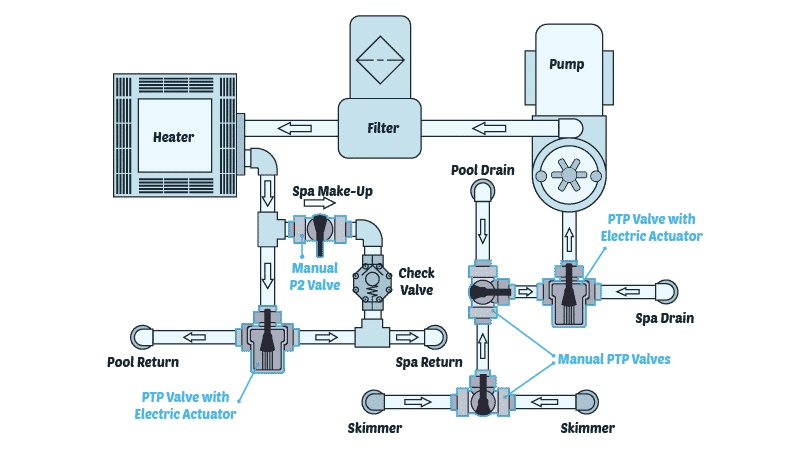
Image Source: Swim University
The diagram shows that the check valve is strategically placed in the pipe that leads water to the pool.
Pool Valves Explained
Every plumbing system (not just for pools) requires efficient “traffic” when it comes to water circulation. Valves are the ones that make it happen. They ensure that the water goes to where it should be.
In the same manner, they also stop the water from entering places that they aren’t supposed to pass through. Essentially, this means that they stop back pressure–or the event of water going back to where they came from.
How Do Pool Valves Work
For Water features
Pool valves are mechanical “attachments” in any standard plumbing system of swimming pools. Basically, these valves regulate the water that comes to and from the pool. They transfer water from the pool to the filter and heater of the plumbing system before returning to the pool.
For Spas and Hot Tubs
Valves in hot tubs and spas ensure that the water has the right temperature. Before the water enters the tub, the valves direct it to the heater of the plumbing system. Once the water is heated enough, it gets transferred to the tub.
For Solar Heating
Solar heating requires the service of valves. It follows the same principles as the one above. The valves in the plumbing system direct water flow to the heating mechanism before it enters the pipes in your supply lines.
For Automatic Chlorinators
An automatic chlorinator is a device that is used to dispense chlorine into a swimming pool or spa. Valves are the ones that direct water to the chlorinator before they enter the pool.
How to Use Pool Valves
Open or Closed : How Should the Pool Valves Be Set?
Pool valves can either be opened or closed. In normal situations, both the main drain and skimmer valves should remain open. While the filter system is running, the water will pass through these valves. The skimmer captures the debris on the pool’s surface. Meanwhile, the main drain will pull water from the pool’s bottom. You can close the valves if you don’t use the pool.
What Position Should My Pool Valves Be Set?
Keep the valves in an open position every time you are using your pool. In this way, sufficient water circulation would take place. On the other hand, the check valve should be closed to prevent the onset of backflow.
Should All Valves Be Open in the Pool?
Not all valves in the plumbing system should be opened. There are different types of valves for different purposes, and opening all the valves at the same time can cause problems. Each valve has a specific function, and opening all the valves can cause the pool to lose water or get too much chlorine.
What Pool Valves Should Be Open?
The skimmer valve should be opened at all times, especially if you are using the pool. The correct pool skimmer valve settings will ensure that there is no floating debris on the surface of the water. The main drain valve in the bottom of the pool should be opened, too. Chlorinator valves must be open during instances you need to add chlorine to the swimming pool.
For your pool valve needs, contact XHVAL Industrial Valve Company right away. XHVAL is a premium source of industrial-grade valves and plumbing equipment. It offers high-quality options for different types of pool valves.
Valves for Pool
It is important to choose correct valves to ensure that your swimming pool is clean and well-maintained.
Different Types of Pool Valves by Shape
Swimming Pool Ball Valves
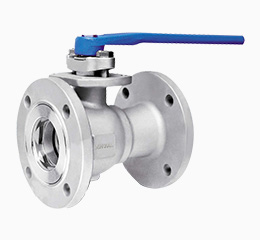
Image Source: XHVAL
A ball valve is a type of valve that features a spherical disc. Its job is to control the flow of water in a swimming pool. Its disc is connected to a lever that can be opened and closed to control water flow. By the way, ball valves aren’t suitable for slurry liquids applications. This is due to the presence of cavities around the seats and ball.
Swimming Pool Gate Valve
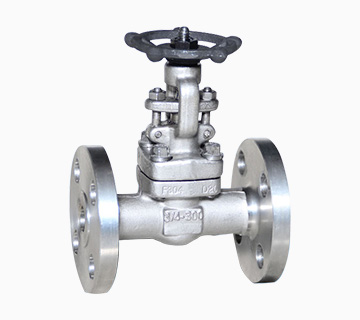
Image Source: XHVAL
Gate valves are commonly used for the flow of liquids and gases. Swimming pools benefit from gate valves as they can guarantee a complete shut-off to the plumbing system. Gate valves are also often used in water systems, as they are able to withstand high pressures. On the other hand, gate valves have difficult disassembly. Maintaining them also requires a significant amount of space.
Different Types of Pool Valves by Actuators
Electric Pool Valve
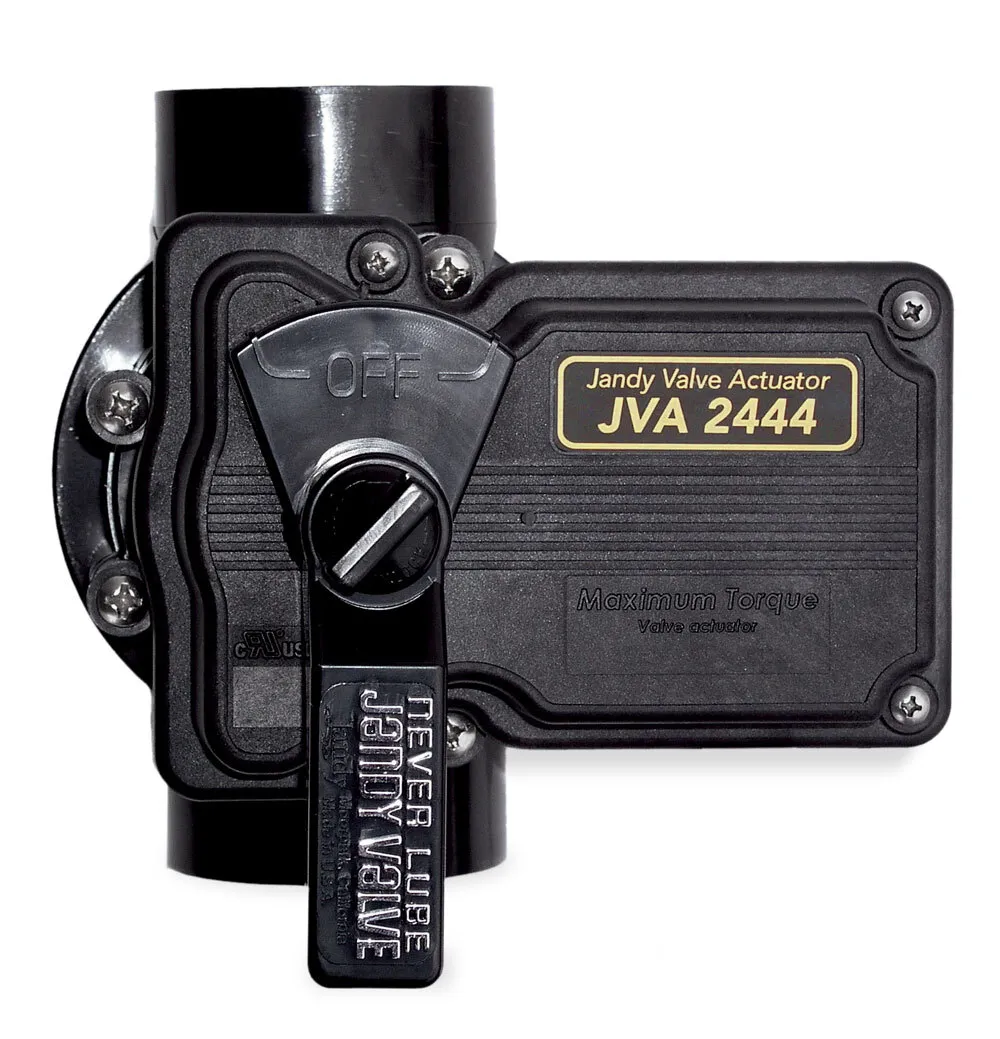
Image Source: Jandy
Electronic pool valves use actuators to automate the function of diverter valves. They have push buttons usually placed in one of the diverter valves of the plumbing system. Once you find the diverter valve, you will be able to wire the actuator to the control box. Installation of these actuators may need the service of professional plumbers.
Automatic Pool Valve
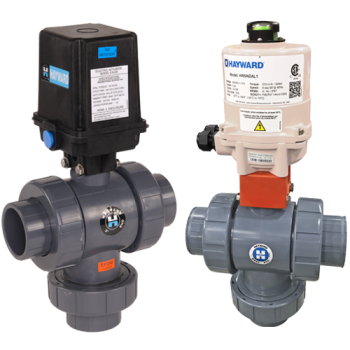
Image Source: Hayward Pools
Automatic pool valves have actuators that generate automated commands to the diverter valves. This is done through the use of a push-button mechanism. These are pre-programmed commands that control the operation of the valves in your pool’s plumbing. It’s not easy to wire these actuators to the plumbing system of your swimming pool.
Different Types of Pool Valves by Opening Ways
4-Way Pool Valve
In plumbing, a four-way valve is a device that controls the flow of water between four different pipes. It has four ports that are usually arranged in a cross or T shape. Four-way valves are used to control the direction of flow in a hydraulic or pneumatic system.
2-Way Pool Valve
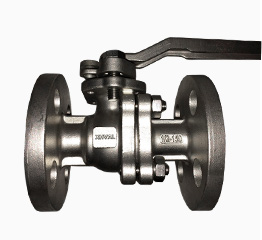
Image Source: XHVAL
A two-way valve allows fluid to flow in two directions: one port is for the outlet and the other is for the inlet. They can be used in a variety of applications, including pool plumbing systems and fluid power systems. Two-way valves can be manual or automatic.
3-Way Pool Valve
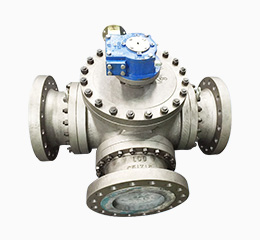
Image Source: XVHAL
As its name suggests, a 3-way valve has three ports. One port can be shut while the remaining two ports continue to transfer water. In some cases, one port can be used to introduce different elements in the main water supply (i.e., chlorine for swimming pools).
How to Identify Pool Valves and Plumbing Lines
Pool plumbing is a technical process, but it’s actually doable. One of the things that you need to do is to identify the valves and essential components of a pool plumbing system. Once you can learn these things, maintaining your pool is a lot easier.
How do you read pool valves?
Step 1
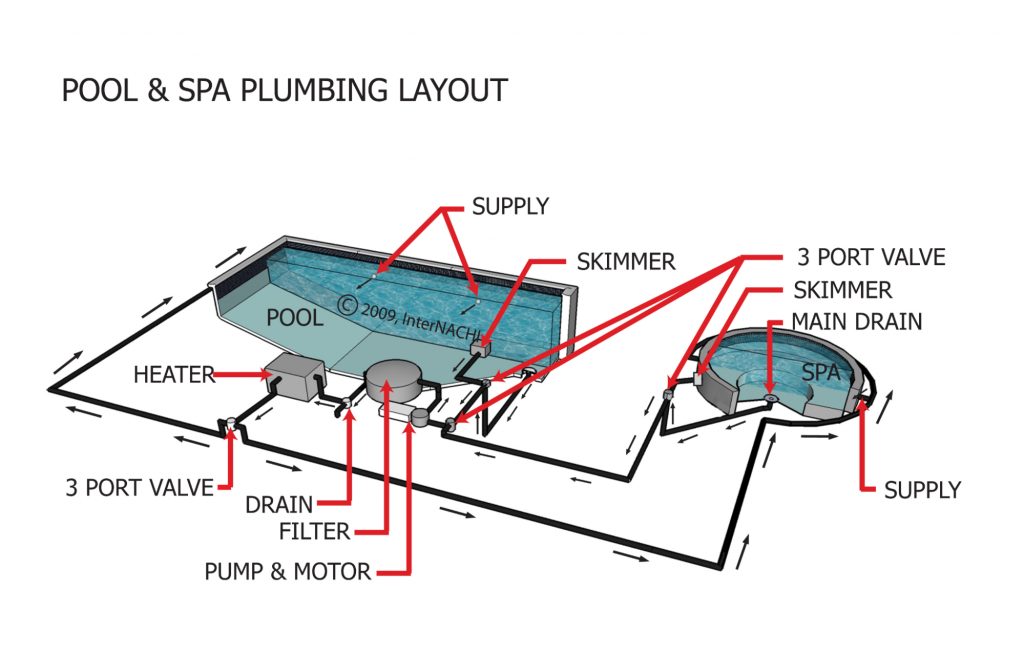
Image Source: Nachi
Go to your pool and look for specific features that either put or pull water. These components could either be main drains, skimmers, deck jets, and vacuum ports.
Step 2
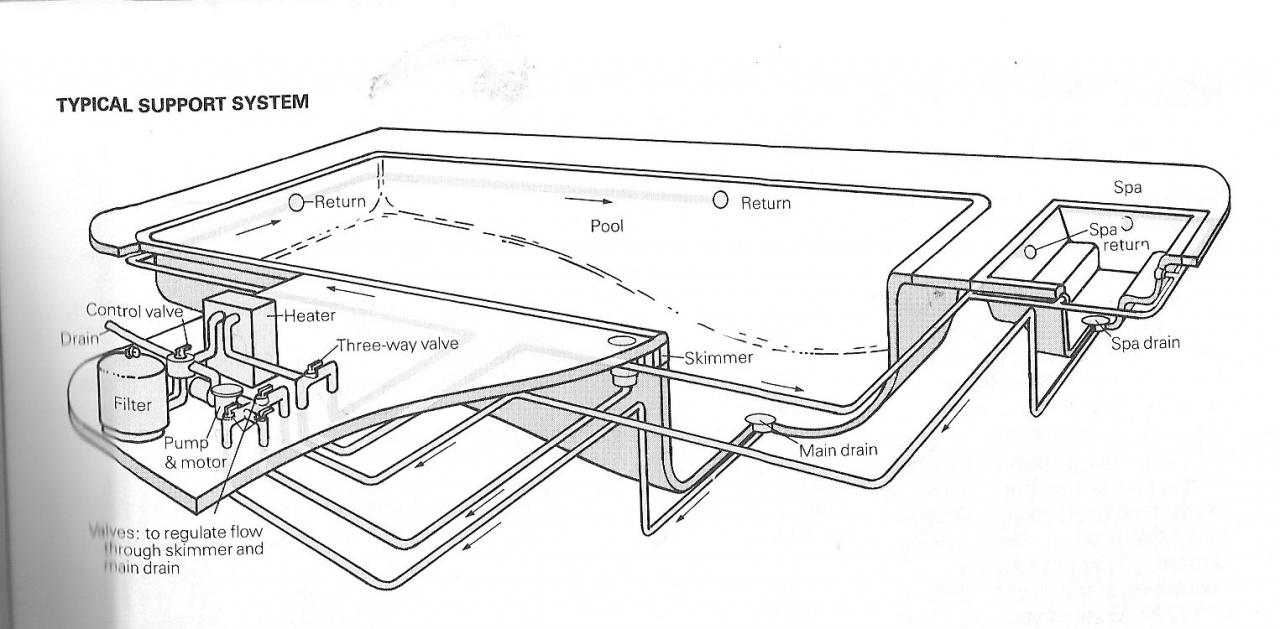
Image Source: Alex Pool Service
It’s essential that you understand how water flow works. In this way, you will be able to identify specific plumbing lines. For instance, the suction lines are responsible for water intake, so it’s on the pump. Meanwhile, return lines deliver water from the pump.
Step 3
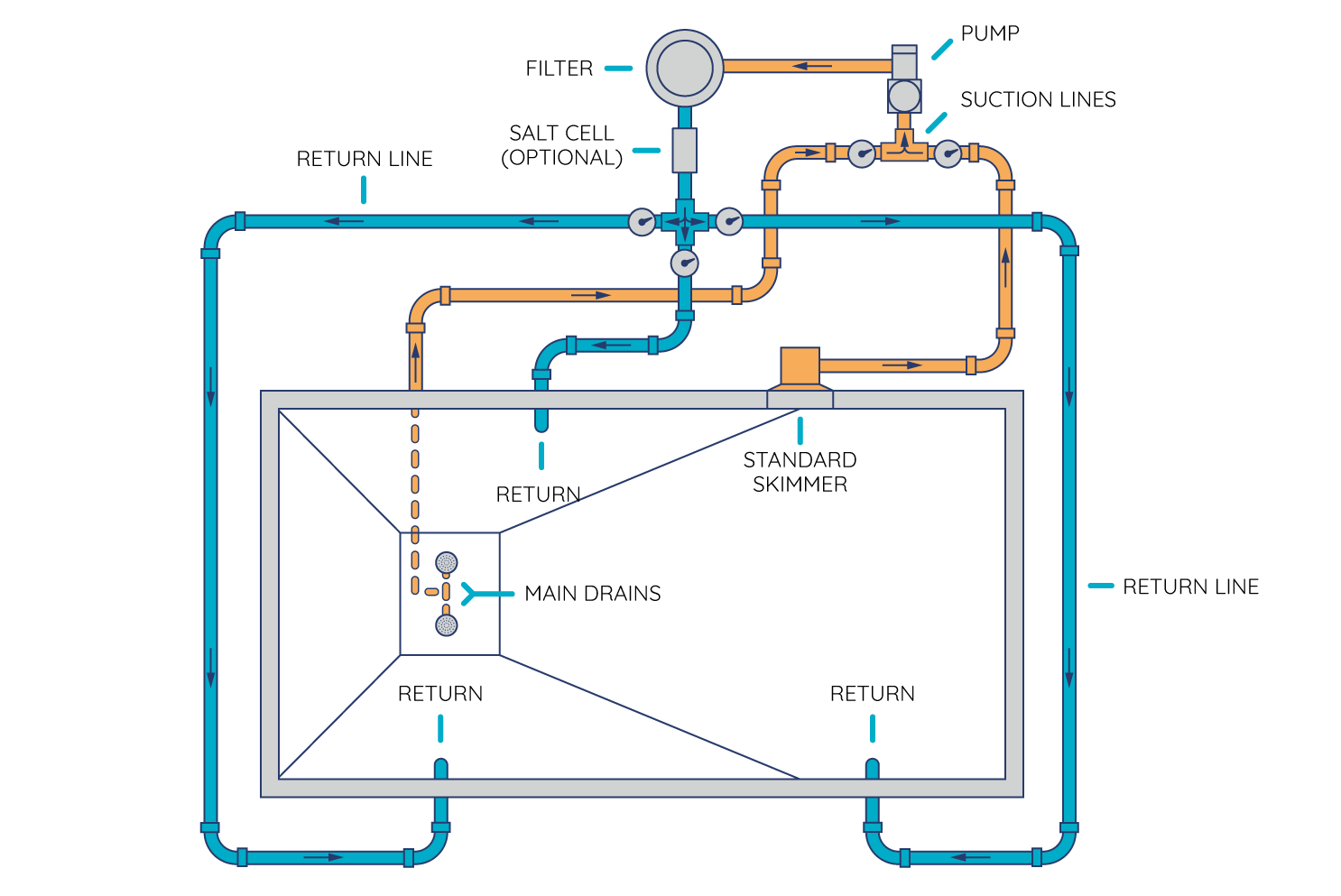
Image Source: Royal Swimming Pools
Turn the valves of the water intake side so that only a single line can pull water.
Step 4
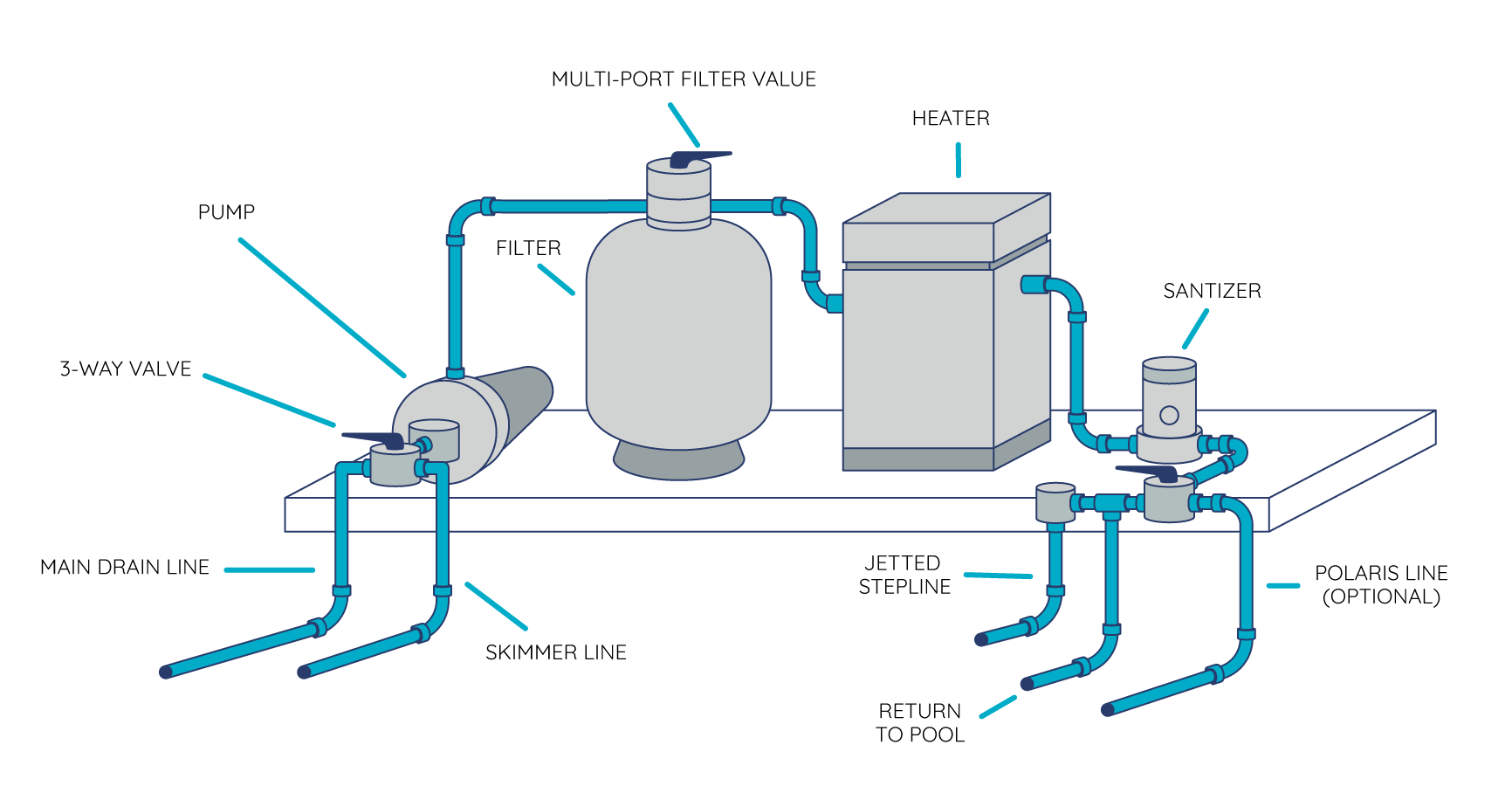
Image Source: Royal Swimming Pools
Go to the pool and probe various suction ports, such as main drains, vac lines, and skimmers.
Step 5
Label the isolated suction line that you were able to identify. Repeat this procedure until such time you can determine all the lines on the suction part of your pool’s plumbing system.
Common Pool Valve Problems
Pool Valve Leaking
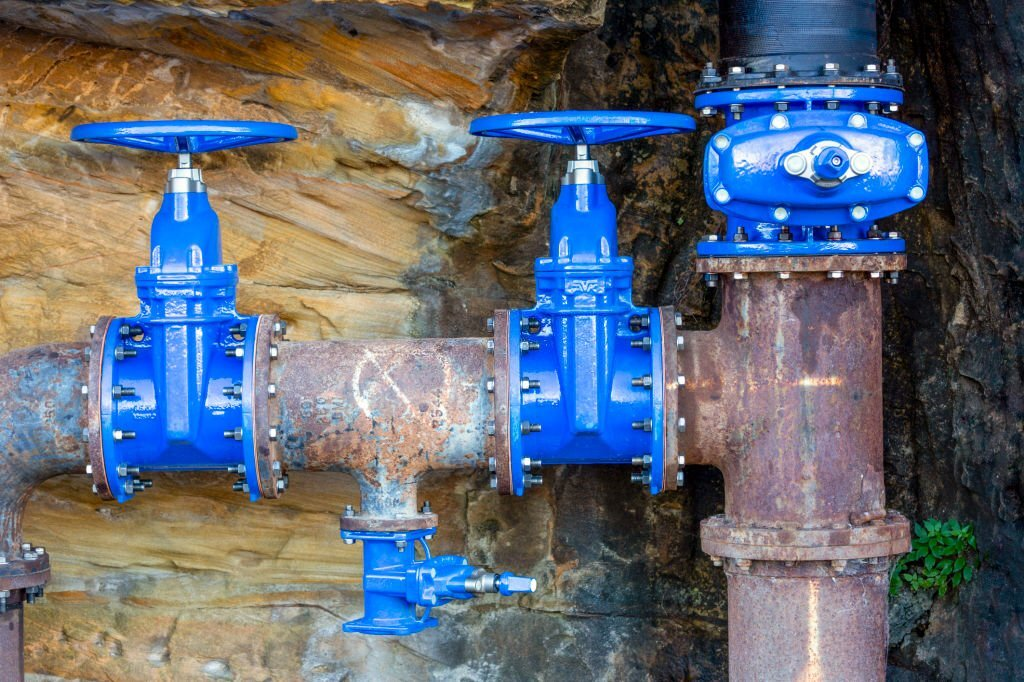
Image Source: iStockPhoto
One of the most frustrating problems you can encounter is a pool valve leak. There are a few different things that can cause pool valve leaking. One possibility is that the O-ring that seals the valve is damaged. Replace the O-ring with a new one. You could replace the valve entirely if you see serious damages that you can no longer replace.
Pool Valve Stuck
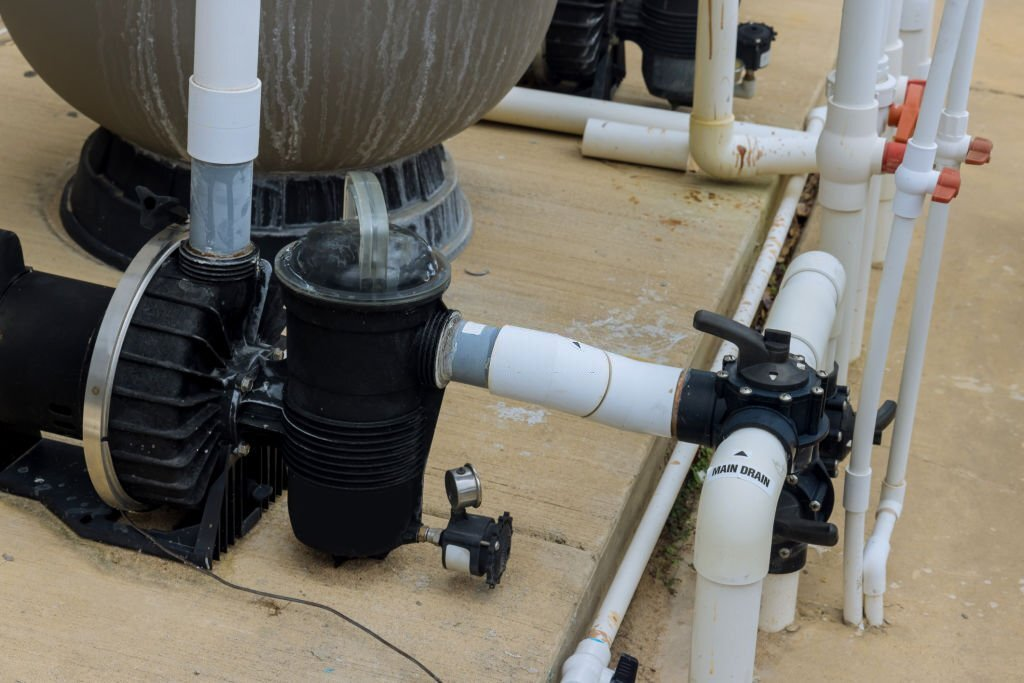
Image Source: iStockPhoto
If you have a stuck valve in your pool, it is likely due to a build-up of mineral deposits. These deposits are naturally found in water. But a bad pool valve filter could cause these deposits to build over time. Eventually, they can disrupt the functionality of the valves. Filter and valve replacements are the ideal solution to this problem.
Pool Valve Replacement
Pool Valve Replacement Parts
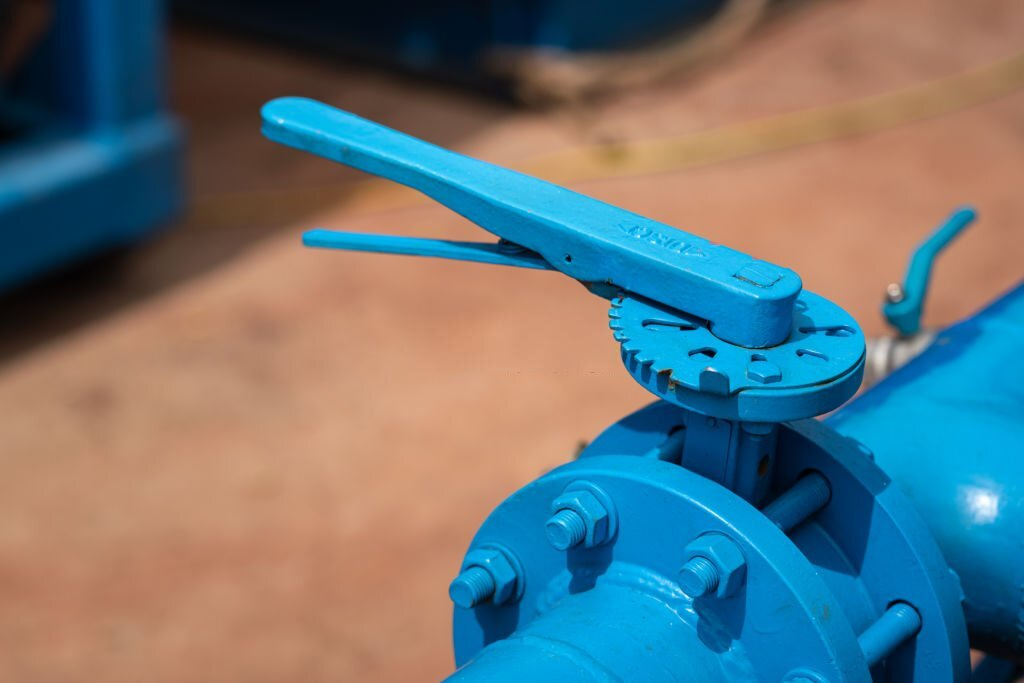
Image Source: iStockPhoto
These are some of the following parts in pool valves that could be replaced:
- Valve lids
- Handles
- Unions
- Gaskets
- Washers
- O-rings
Pool Multiport Valve Replacement Costs
The average cost of multiport valves varies. Typically, replacing these valves could cost you around $200 to $300 apiece. The higher the price, the more durable and optimal the valves are. These estimates don’t include the cost of hiring professional plumbers if you are going to opt for their service.
Where to Find Pool Valve Replacement?
Numerous retailers sell pool valve replacements. Your local hardware and plumbing stores could have them. And if you want high-quality pool valve replacements at factory pricing, try a China valve.
Pool Valve Installation
Pool valves are essential in the operation of the plumbing system of your swimming pool. They ensure proper water circulation, which, in turn, keeps your pool clean all the time. Check valves, for instance, to prevent water from going back to the pump. Hence, it’s crucial that you install these valves to your pool’s plumbing.
